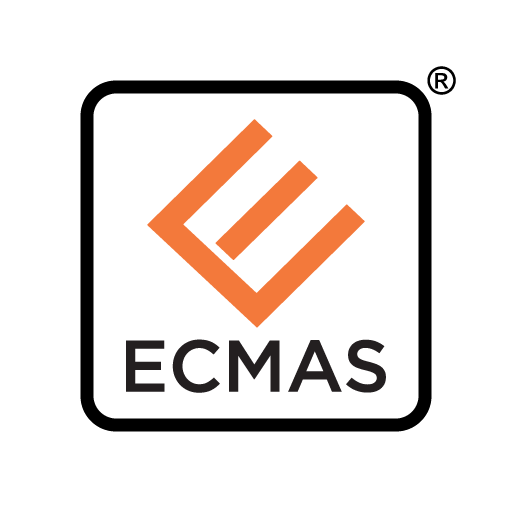ECMAS EXF 54
Hybrid Synthetic Structural Fiber
ECMAS X FIBER 54 (EXF 54) is a synthetic structural fiber designed to improve the durability and mechanical properties of concrete. EXF 54 is a hybrid fiber, meaning it consists of a non-fibrillated monofilament containing a special mix of Polyolephinic polymers and a fibrillated Polypropylene fiber capable of reducing and in some cases totally eliminating plastic shrinkage. EXF 54 increases concrete’s flex fatigue, ductility, fatigue resistance and durability.
Unlike metal fibers, EXF 54 is non-corrosive, non-magnetic, and 100% acid and alkali proof. Concrete made with EXF 54 offers much greater durability and mechanical performance than concrete made with an equal amount (by volume) of metal fibers, either smooth or hooked. EXF 54 may be used in place of electro-welded mesh in all flooring applications.
Advantages
• Industrial floors and outdoor pavements: Parking areas, material storage areas, flooring subject to heavy weights and/or high dynamic loads, jointless flooring, service stations and workshops, refrigerating cells, storage areas, wharves, airport runways. A special calculation software for this type of slab on ground pavement, ECMAS team can provide software aided X Floor Designs.
• Residential & Commercial construction: Foundation slabs, floor slabs, Composite Steel Deck slabs.
• Highly resilient with excellent recovery characteristics and thermal flexibility.
• Prefabrication: Panels, prefabricated elements for tunnels, drinking water reservoirs, cable ducts (conventional, fiber optic, etc.), railway ties, prefabricated rail plates, roofing elements, jersey barriers.
Applications
EXF 54 fibers may be used in any kind of concrete and for any of the exposure classes they are designed for (in accordance with EN206). Its chemical inertia allows EXF 54 to be used beneficially in making concrete for use in highly aggressive environments such as the marine environment or the chemicals industry, where concrete with metal fibers cannot be used because of corrosion.
